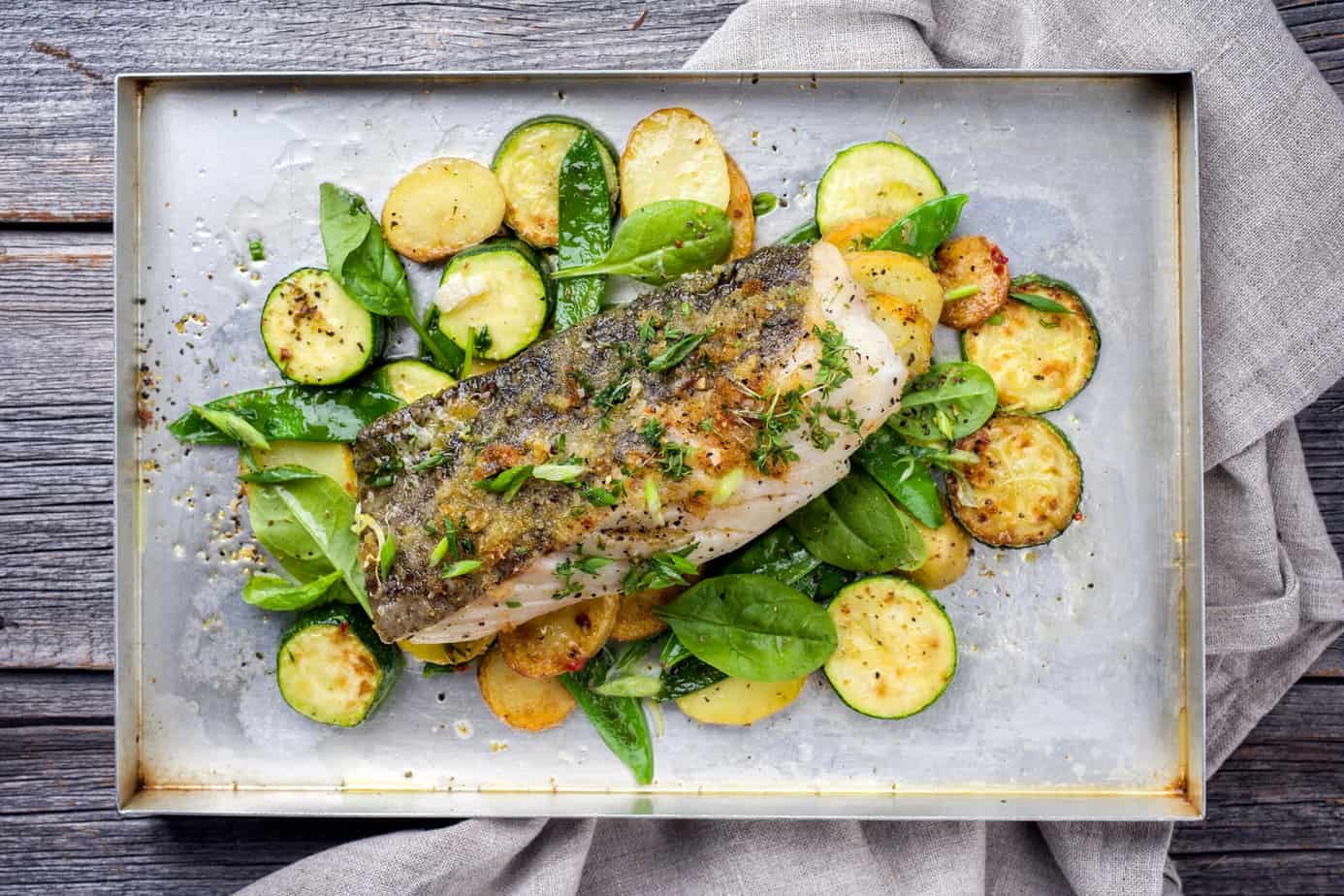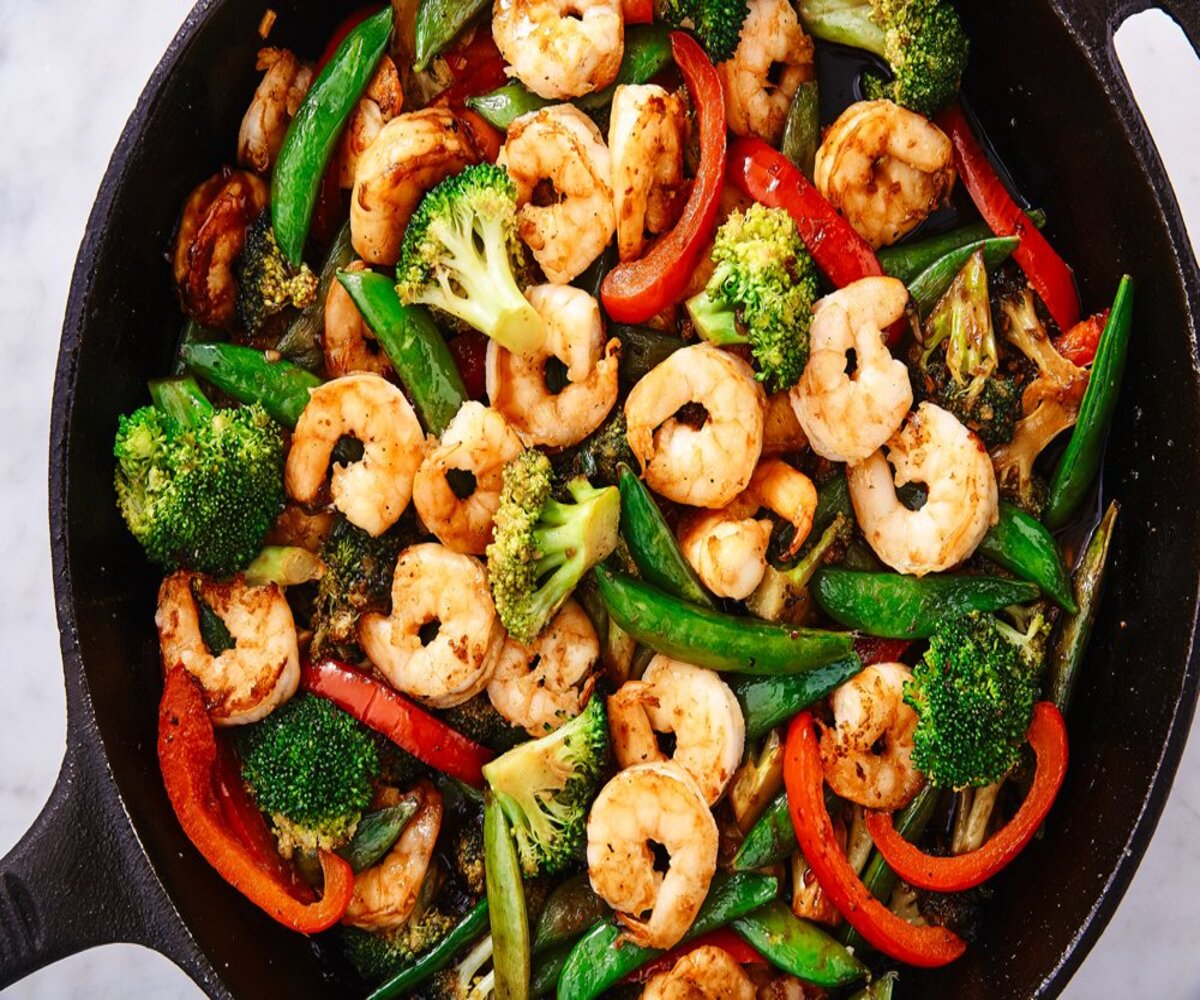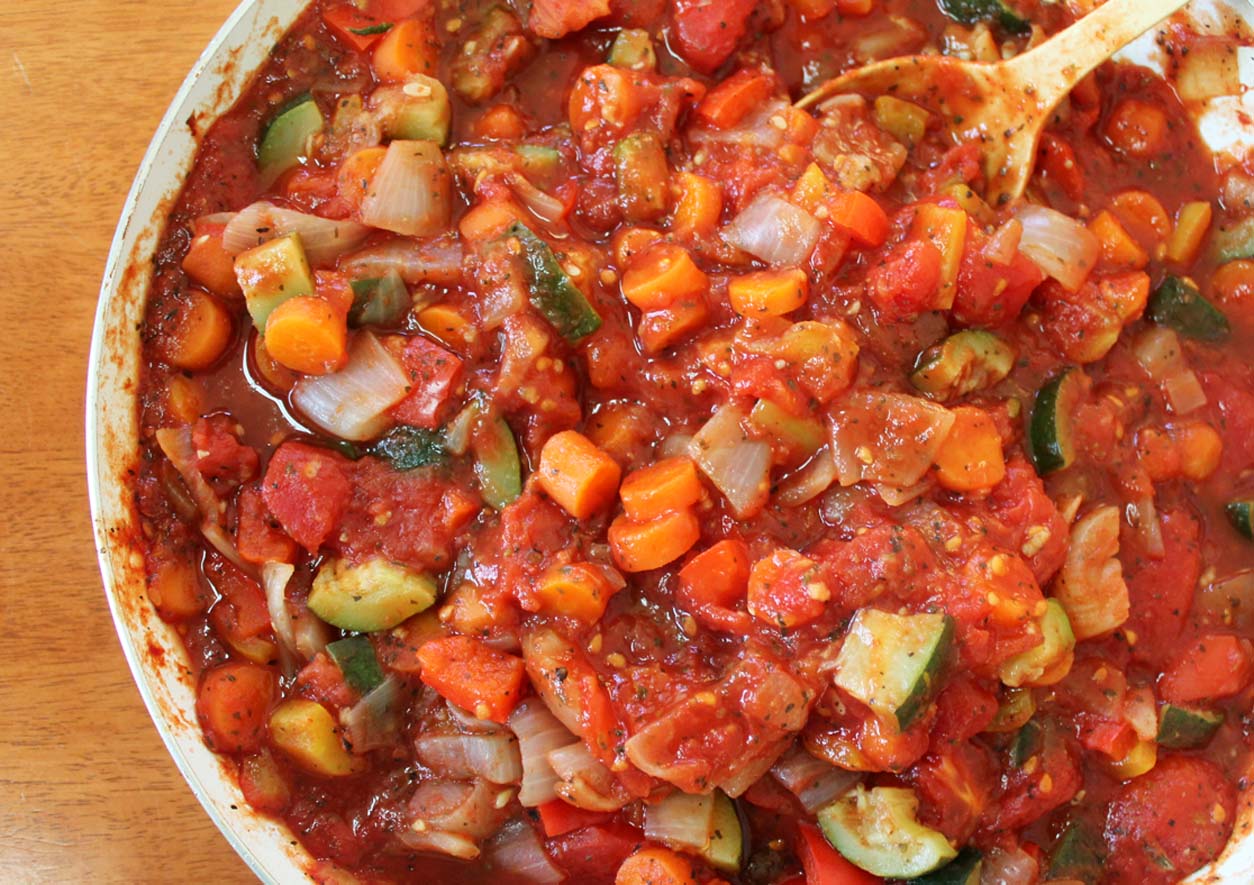Home>Gardening News and Trends>Latest News>What Vegetables Go With Fish


Latest News
What Vegetables Go With Fish
Modified: January 22, 2024
Discover the latest news on what vegetables go best with fish. Explore a variety of delicious and healthy options to enhance your seafood dishes.
(Many of the links in this article redirect to a specific reviewed product. Your purchase of these products through affiliate links helps to generate commission for Chicagolandgardening.com, at no extra cost. Learn more)
Table of Contents
Introduction
When it comes to preparing a delicious meal, finding the perfect combination of flavors and ingredients is essential. If you’re a fan of fish, you may be wondering what vegetables would complement that delicate and savory taste. Luckily, there are plenty of options to choose from that can elevate your fish dish to new heights.
Pairing vegetables with fish not only adds nutritional value to your meal but also brings out the best flavors in both the fish and the vegetables. Whether you prefer leafy greens, cruciferous vegetables, or root vegetables, there are endless possibilities to explore. In this article, we will delve into the world of vegetables that go well with fish and how they can enhance your dining experience.
From leafy greens like spinach and kale to root vegetables like carrots and sweet potatoes, each vegetable adds its own unique flavor profile and texture to the dish. Additionally, the versatility of vegetables allows for various cooking methods, such as roasting, steaming, or sautéing, to further enhance their taste.
Not only do vegetables provide a burst of vibrant colors on your plate, but they are also rich in vitamins, minerals, and dietary fiber. They can help balance out the richness and natural oils in many types of fish, providing a harmonious balance of flavors and textures.
So, whether you’re grilling a fresh fillet of salmon, pan-searing a delicate piece of halibut, or baking a flavorful cod dish, incorporating vegetables into the meal will add depth and complexity to your culinary creation.
In the following sections, we will explore different categories of vegetables that pair well with fish and provide some specific examples for each category. Get ready to take your fish dishes to a whole new level with these delectable vegetable combinations!
Leafy Greens
Leafy greens are not only incredibly nutritious but also provide a fresh and vibrant addition to any fish dish. Their crisp texture and earthy flavors complement the delicate nature of fish, creating a harmonious and satisfying combination.
One popular leafy green that pairs well with fish is spinach. Whether it’s sautéed, steamed, or used as a bed for grilled fish, spinach adds a subtle sweetness and a hint of bitterness that enhances the overall taste. Other leafy greens like kale, Swiss chard, and arugula can also be great options to accompany fish dishes, offering their unique flavors and nutritional benefits.
For a light and refreshing twist, consider incorporating mixed spring greens in a salad alongside your fish. The combination of various lettuces, such as romaine, mesclun, and butterhead, provides a medley of flavors and textures. Top it with a tangy vinaigrette or a squeeze of lemon juice to bring out the flavors of both the greens and the fish.
When cooking with leafy greens, it’s important to remember that they tend to wilt quickly. To maintain their vibrant color and crispness, it’s best to lightly cook them or serve them raw as a salad or a garnish.
Here are some delicious examples of leafy greens that pair well with fish:
- Spinach: Sautéed alongside grilled salmon or used as a topping for fish tacos.
- Kale: Baked into crispy kale chips as a side dish for roasted white fish.
- Arugula: Tossed in a lemon vinaigrette and served with seared tuna.
- Swiss chard: Sautéed with garlic and served with pan-fried tilapia.
- Mixed spring greens: Served as a bed for grilled halibut with a citrus dressing.
Don’t be afraid to experiment with different combinations of leafy greens and fish. Each pairing offers a unique flavor profile and can take your fish dish to new heights. So, the next time you’re preparing a fish meal, consider incorporating some fresh and nutritious leafy greens to elevate your dining experience.
Cruciferous Vegetables
Cruciferous vegetables are not only packed with nutrients but also offer a satisfying crunch and distinctive flavor that pairs well with fish. These vegetables, which include broccoli, cauliflower, cabbage, and Brussels sprouts, provide a delicious contrast to the tender texture of fish.
One popular way to enjoy cruciferous vegetables with fish is by roasting them. Roasting brings out their natural sweetness and adds a caramelized flavor that complements the fish’s subtle taste. Tossing the vegetables in olive oil, salt, and spices like garlic powder or paprika before roasting creates a mouthwatering combination.
Another option is to sauté cruciferous vegetables with some garlic and olive oil until they are cooked to a crisp-tender texture. This method helps retain their natural crunch while adding a delightful aroma and flavor. Serve them alongside grilled or pan-seared fish for a complete and satisfying meal.
Here are some delicious examples of cruciferous vegetables that pair well with fish:
- Broccoli: Roasted alongside baked salmon or served as a side dish for grilled swordfish.
- Cauliflower: Sautéed with garlic and served with pan-fried tilapia or baked cod.
- Cabbage: Shredded and used as a crunchy topping for fish tacos or coleslaw with grilled halibut.
- Brussels sprouts: Roasted until crispy and served with pan-seared sea bass.
Cruciferous vegetables not only add texture and taste to your fish dishes but also provide a wide range of health benefits. They are rich in fiber, vitamins, and minerals, making them a nutritious addition to your meal.
Next time you’re planning a fish dinner, consider incorporating some delicious cruciferous vegetables. Whether roasted, sautéed, or used as a crunchy topping, they will bring a satisfying and flavorful element to your fish dish that will leave you wanting more.
Root Vegetables
Root vegetables are hearty and earthy, making them a perfect companion for fish dishes. With their natural sweetness and robust flavors, they can add depth and complexity to the overall taste profile of your meal.
There is a wide range of root vegetables to choose from, each with its distinct taste and texture. Carrots, sweet potatoes, parsnips, and beets are just a few examples that blend well with fish.
One popular way to prepare root vegetables is by roasting them. Roasting brings out their natural sweetness and enhances their flavor. Simply chop the vegetables into bite-sized pieces, toss with olive oil, salt, and herbs like rosemary or thyme, then roast until they are tender and caramelized. This method pairs perfectly with baked or grilled fish, adding a delightful contrast in flavors and textures.
Another option is to steam root vegetables, preserving their natural flavors and nutrients. Steamed carrots or sweet potatoes can be served as a side dish to steamed or poached fish, creating a light and healthy meal.
Here are some delicious examples of root vegetables that pair well with fish:
- Carrots: Roasted alongside pan-seared salmon or used in a carrot and ginger puree to accompany grilled white fish.
- Sweet potatoes: Oven-baked and topped with flaked tuna or served as sweet potato fries with crispy fish fillets.
- Parsnips: Roasted and served with roasted cod or added to a fish stew for added sweetness.
- Beets: Roasted and sliced as a vibrant side dish for pan-fried sea bass or added to a salad with smoked salmon.
Root vegetables not only provide a delicious pairing with fish but also offer a wealth of nutrients. They are a great source of vitamins, minerals, and dietary fiber, making your meal more wholesome and satisfying.
Next time you’re planning a fish dinner, consider incorporating some tasty root vegetables. Whether roasted, steamed, or used in other creative ways, they will enhance the flavors and bring a comforting element to your fish dish.
Allium Vegetables
Allium vegetables, known for their distinct aroma and flavor, can bring a savory and aromatic element to your fish dishes. These vegetables, including onions, garlic, shallots, and leeks, add depth and complexity to the overall taste profile, enhancing the natural flavors of fish.
When cooking with allium vegetables, many people start by sautéing them in a little olive oil or butter. This process helps release their flavors and creates a delicious base for various fish preparations.
Onions, in particular, are a versatile allium vegetable that can be used in countless fish recipes. They can be caramelized to add a touch of sweetness or finely diced and added to fish burgers or fish cakes for an extra burst of flavor. Shallots and leeks can also be sautéed and used as aromatic additions to seafood stews or as a topping for grilled fish.
Another popular option is to roast allium vegetables alongside fish. This method infuses the fish with their delicious flavors while allowing them to caramelize, creating a delightful combination of tastes. Whether it’s a whole roasted fish with a bed of sliced onions or garlic-roasted shrimp, allium vegetables add a mouthwatering touch.
Here are some delicious examples of allium vegetables that pair well with fish:
- Onions: Caramelized and served with roasted salmon or used as a base for fish soups and stews.
- Garlic: Roasted and mashed into a paste to spread on grilled fish or used in a marinade for shrimp skewers.
- Shallots: Sautéed and added to a butter sauce for pan-seared scallops or used in a homemade tartar sauce for fish fillets.
- Leeks: Sautéed with butter and served as a side dish for grilled trout or used as a base for fish chowder.
Allium vegetables not only enhance the flavor of fish but also offer numerous health benefits. They contain antioxidant and anti-inflammatory properties that support overall health and wellbeing.
So, the next time you’re preparing a fish dish, don’t forget to incorporate some aromatic allium vegetables. They will add depth, aroma, and a touch of savory goodness to your meal, transforming it into a culinary masterpiece.
Nightshade Vegetables
Nightshade vegetables bring a unique and vibrant flavor to fish dishes, adding a touch of sweetness and a hint of tanginess. These vegetables, which include tomatoes, bell peppers, eggplant, and chili peppers, can elevate your fish dish with their robust flavors and enticing colors.
One of the most popular nightshade vegetables to pair with fish is tomatoes. Tomatoes come in various forms, such as fresh, canned, or sun-dried, and they can be used in different ways to enhance the taste of fish. Fresh tomatoes can be diced and added to fish tacos or used as a base for a flavorful tomato sauce to accompany pan-seared fish. Canned tomatoes can be used to create a rich and hearty seafood stew or a tangy tomato-based curry with fish fillets. Sun-dried tomatoes can add an intense burst of flavor when incorporated into a marinade for grilling fish or chopped and sprinkled over baked fish dishes.
Bell peppers are another nightshade vegetable that pairs well with fish. Their vibrant colors and sweet, slightly tangy taste can enhance the overall flavor profile of your fish dish. Sliced bell peppers can be grilled alongside fish to add a smoky and slightly charred flavor or sautéed and mixed into a fish stir-fry for a burst of color and crunch.
Eggplant, known for its meaty texture and mild flavor, can also be a great addition to fish dishes. One popular way to prepare eggplant is by grilling or roasting it until it’s tender and slightly caramelized. It can be used as a base for fish moussaka or served as a side dish with grilled fish fillets, adding a heartiness and depth of flavor to the meal.
Chili peppers, like jalapenos or serranos, can add a spicy kick to your fish dishes. Whether used in a marinade for grilled fish or finely chopped and sprinkled over ceviche, these peppers add a fiery heat that not only complements the fish but also brings a burst of excitement to the palate.
Here are some delicious examples of nightshade vegetables that pair well with fish:
- Tomatoes: Used in a fresh salsa to top grilled fish or diced and added to a fish curry for a tangy kick.
- Bell Peppers: Grilled and mixed with fish in fajitas or sautéed and served as a side dish to fish kebabs.
- Eggplant: Grilled and used as a base for fish Parmesan or sliced and roasted as an accompaniment to baked fish.
- Chili Peppers: Added to a spicy fish soup or finely chopped and used in a marinade for grilled fish skewers.
Nightshade vegetables not only enhance the flavor of fish but also provide a range of vitamins, minerals, and antioxidants. They are a versatile and nutritious addition to any fish dish.
So, the next time you’re looking to add some bold and vibrant flavors to your fish meal, consider incorporating some delicious nightshade vegetables. They will add depth, color, and a touch of tanginess that will impress your taste buds.
Sea Vegetables
Sea vegetables, also known as seaweed, are not only packed with nutrients but also offer a unique taste and texture when paired with fish dishes. Rich in minerals like iodine, calcium, and iron, sea vegetables add a hint of umami flavor and a satisfying chewiness to your fish-based meals.
One popular sea vegetable is nori, commonly used in sushi rolls. Nori can be wrapped around fish to add a subtle briny flavor and a delightful crunch. It pairs exceptionally well with seafood like tuna, salmon, or shrimp, enhancing the overall taste and texture.
Kombu, another type of sea vegetable, is often used as a flavoring agent in fish broths or stews. It adds a deep, savory taste to the broth and enhances the natural flavors of the fish. Kombu can also be used to wrap fish before grilling or steaming, imparting its unique essence into the dish.
Dulse, a reddish-brown sea vegetable, has a slightly salty and smoky flavor. It can be crumbled and sprinkled over fish dishes as a garnish, adding a touch of umami and a hint of oceanic taste.
Sea vegetables like wakame and hijiki can also be used in salads alongside cooked fish or added to fish-based soups and chowders, providing not only additional nutrition but also a distinct taste and texture.
Here are some delicious examples of sea vegetables that pair well with fish:
- Nori: Wrapped around grilled fish for a sushi-inspired twist or crumbled over fish tacos for added crunch and flavor.
- Kombu: Used as a flavoring agent in fish broth for a rich and savory base or wrapped around fish before cooking to infuse it with depth of flavor.
- Dulse: Sprinkled over baked fish dishes or added to fish stir-fries for a salty and smoky touch.
- Wakame: Used in salads alongside cooked fish or added to fish-based soups and stews for added texture and umami.
Sea vegetables not only contribute to the flavor profile of fish recipes but are also a great source of vitamins, minerals, and antioxidants. Their unique taste and nutritional benefits make them an excellent addition to your seafood dishes.
So, the next time you’re looking to add a touch of ocean goodness to your fish meal, consider incorporating some delicious sea vegetables. They will not only enhance the taste but also provide a nutritious boost to your dish.
Citrus Fruits
Citrus fruits are a fantastic addition to fish dishes, as their bright and tangy flavors complement the delicate taste of fish. Their zesty and refreshing qualities add a burst of freshness that can balance out the richness of the fish and elevate its flavors.
Lemons, limes, oranges, and grapefruits are some of the popular citrus fruits that pair well with fish. They can be used in various ways to enhance the taste and presentation of your fish dishes.
One of the simplest and most traditional methods is squeezing fresh citrus juice over grilled or baked fish. The acidity of the juice helps to cut through the richness of the fish and brightens up the flavors. The natural tanginess of citrus fruits can complement a wide range of fish, from delicate white fish to robust oily fish.
Citrus zest, the finely grated outer peel of the fruit, adds an extra layer of flavor to fish dishes. It contains essential oils that carry intense citrus aromas, enhancing the overall experience. Sprinkling citrus zest over fish before grilling or baking infuses the dish with a burst of fragrance.
Citrus fruits can also be used to create marinades or glazes for fish. By combining the juice or zest with other ingredients like herbs, garlic, and honey, you can create a flavorful mixture to coat the fish before cooking. This allows the fish to absorb the citrus flavors and results in a delicious and moist final product.
Additionally, citrus segments or slices can be used as a garnish or accompaniment to fish dishes. The burst of juicy citrus adds a refreshing and visually appealing element to the plate. It’s a great way to add both flavor and aesthetic appeal to your fish-based meals.
Here are some examples of how citrus fruits can be used with fish:
- Lemon: Squeezed over grilled salmon or used in a lemon-butter sauce for baked white fish.
- Lime: Drizzled over fish tacos or used in a tangy marinade for grilled shrimp skewers.
- Orange: Segments added to a citrus salad with seared scallops or used to glaze roasted fish fillets.
- Grapefruit: Combined with herbs and honey to create a tangy glaze for broiled fish fillets or used in a refreshing ceviche.
Citrus fruits not only enhance the flavor of fish but also provide a significant dose of Vitamin C and other beneficial nutrients. They are known for their antioxidant properties and are a great addition to a healthy and balanced diet.
So, the next time you prepare a fish meal, don’t forget to incorporate some citrus fruits. Their tangy and vibrant flavors will add a refreshing twist to your dishes, making them more enjoyable and memorable.
Tomatoes
Tomatoes are incredibly versatile and can be used in a wide variety of dishes, including those featuring fish. These juicy and vibrant fruits add a burst of color and a tangy sweetness that can elevate the flavors of your fish-based meals.
Fresh tomatoes can be diced and used in salads or as a topping for grilled or roasted fish. The natural juiciness and acidity of tomatoes bring a refreshing and bright element to the dish, balancing out the richness of the fish. Whether it’s cherry tomatoes, plum tomatoes, or vine-ripened tomatoes, their flavors can enhance the overall taste profile of the dish.
Tomato sauces are another popular way to incorporate tomatoes into fish dishes. From classic marinara sauce to tangy salsa, these sauces can complement a variety of fish, from delicate white fish to hearty tuna or salmon. Their rich flavor and texture create a delicious coating for the fish, adding depth and complexity to the dish.
Roasting tomatoes can intensify their sweetness and enhance their natural flavors. Roasted tomatoes make a wonderful accompaniment to grilled fish, as their caramelized flavors create a delightful contrast. They can be served as a side dish or incorporated into sauces and dressings.
In Mediterranean cuisine, tomatoes are often paired with fish in dishes like bouillabaisse, a flavorful seafood stew, or cioppino, a tomato-based fisherman’s stew. The combination of tomatoes, herbs, and various seafood creates a harmonious blend of flavors that enhances the taste of the fish.
Dried or sun-dried tomatoes offer a concentrated burst of flavor and can be used to add depth to fish dishes. They can be rehydrated and incorporated into fish stuffing or mixed into sauces and marinades to infuse the fish with their intense umami flavor.
Here are some delicious examples of how tomatoes can be used with fish:
- Caprese salad: Layered with fresh tomatoes, mozzarella cheese, and basil, drizzled with olive oil and balsamic glaze, accompanied by seared tuna or grilled white fish.
- Tomato-based fish curry: Simmered with fragrant spices, coconut milk, and chunks of fish for a flavorful and aromatic dish.
- Tomato and herb stuffed fish: Filled with a mixture of tomatoes, breadcrumbs, herbs, and garlic, then baked or grilled to perfection.
- Tomato and olive salsa: Made with diced tomatoes, olives, red onion, and herbs, served on top of pan-seared fish fillets.
Tomatoes not only enhance the taste of fish but are also a great source of vitamins, minerals, and antioxidants. They are known for their lycopene content, which has been linked to potential health benefits.
So, the next time you’re planning a fish dinner, consider incorporating some juicy and flavorful tomatoes. Whether fresh, roasted, or in sauce form, they will bring a delightful tanginess and a burst of color to your dish.
Fresh Herbs
Fresh herbs are a fantastic way to enhance the flavors of fish dishes, adding a burst of aromatic and vibrant taste. Whether you opt for delicate herbs like parsley and dill or robust ones like rosemary and thyme, these aromatic additions can take your fish-based meals to a whole new level.
One of the simplest and most effective ways to use fresh herbs with fish is to sprinkle them over grilled, baked, or pan-seared fish just before serving. The aromatic oils released by the herbs infuse the fish with delightful flavors and tantalizing scents.
Parsley is a popular choice when it comes to pairing herbs with fish. Its fresh and slightly peppery taste complements a variety of fish types. Sprinkle chopped parsley over cooked fish fillets or use it as a garnish for fish soups and stews to add a touch of brightness.
Dill is another herb that pairs wonderfully with fish, especially salmon. Its delicate and slightly anise-like flavor elevates the taste of the fish. Sprigs of dill can be added to fish dishes during cooking or used as a garnish to provide a visually pleasing and aromatic touch.
Basil, with its sweet and slightly minty taste, is a versatile herb that pairs well with most fish. It can be used in sauces, such as a vibrant pesto, or simply torn and added to salads or as a topping for fish dishes.
Rosemary and thyme, with their robust and earthy flavors, are excellent choices for heartier fish like swordfish or tuna. These herbs can be added to marinades or used to season fish before cooking, enhancing the natural flavors and providing a delightful herbal aroma.
Cilantro, with its bright and citrusy flavor, is commonly used in many fish dishes, particularly those with a Mediterranean or Asian influence. It adds a refreshing and zesty element to the overall taste profile of the dish.
Here are some delicious examples of how fresh herbs can be used with fish:
- Grilled lemon dill salmon: Seasoned with fresh dill, lemon zest, and a sprinkle of salt and pepper before grilling to perfection.
- Pan-seared cod with parsley sauce: Topped with a vibrant green parsley sauce made with fresh parsley, garlic, lemon juice, and olive oil.
- Basil and tomato-topped branzino: Baked with a layer of sliced tomatoes, fresh basil leaves, and a drizzle of olive oil for a burst of Mediterranean flavors.
- Rosemary and thyme-crusted tuna: Coated with a mixture of finely chopped rosemary, thyme, garlic, and breadcrumbs before searing in a hot skillet.
Fresh herbs not only enhance the flavor of fish but also offer numerous health benefits. They are rich in antioxidants, vitamins, and minerals, making them a nutritious addition to your meals.
So, the next time you’re cooking fish, don’t hesitate to incorporate some fresh herbs. Their aromatic and flavorful qualities will elevate your dish and make it a truly memorable dining experience.
Conclusion
Pairing vegetables with fish not only enhances the nutritional value of your meal but also brings out the best flavors in both the fish and the vegetables. From leafy greens to cruciferous vegetables, root vegetables to allium vegetables, nightshade vegetables to sea vegetables, and citrus fruits to fresh herbs, there are plenty of options to explore when it comes to creating delectable and well-balanced fish dishes.
Leafy greens like spinach, kale, and arugula add freshness and a touch of bitterness that complements the delicate nature of fish. Cruciferous vegetables like broccoli, cauliflower, and cabbage provide a hearty and earthy flavor that pairs well with fish, especially when roasted or sautéed. Root vegetables like carrots, sweet potatoes, and parsnips offer a sweet and satisfying element to fish dishes, whether they’re roasted, steamed, or used in purees.
Allium vegetables like onions, garlic, shallots, and leeks infuse fish dishes with savory aromas and add depth of flavor, whether they’re sautéed, roasted, or used as a base for soups and stews. Nightshade vegetables like tomatoes, bell peppers, eggplant, and chili peppers bring tanginess and vibrant colors to fish dishes, whether used fresh, roasted, or in sauces and salsas. Sea vegetables like nori, kombu, and dulse provide a hint of umami flavor and chewiness that complements various fish preparations, from sushi rolls to seafood stews.
Citrus fruits like lemons, limes, oranges, and grapefruits bring a refreshing tang and brightness to fish dishes, whether squeezed over grilled fish or used in marinades, glazes, and dressings. Fresh herbs like parsley, dill, basil, rosemary, thyme, and cilantro add aromatic and vibrant flavors to fish dishes, whether sprinkled over cooked fish or incorporated into sauces and marinades.
Each category of vegetables and fruits offers a unique combination of flavors, textures, and nutritional benefits that can enhance your fish-based meals. The key is to experiment and have fun with different combinations, cooking methods, and seasonings to find your perfect pairing.
So, the next time you’re cooking fish, don’t hesitate to explore the diverse world of vegetables and fruits. Let your creativity shine as you add a burst of color, flavor, and nutrition to your delectable fish dishes.










